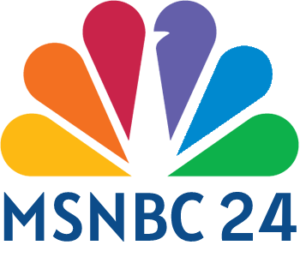The COVID-19 pandemic was not only a public health crisis but also a battleground for science and politics. Recently, Drs. Steven Massey and Steven Quay revealed in their preprint paper, The Illusion of Biosafety During SARS-CoV-2 Research, that the BSL-3 laboratory at the University of North Carolina at Chapel Hill (UNC-Chapel Hill) may have experienced multiple SARS-CoV-2 laboratory-acquired infections (LAIs) between 2020 and 2021. More disturbingly, the authors allege that the U.S. Centers for Disease Control and Prevention (CDC) and UNC exerted pressure, threatening to revoke their data access privileges during the paper’s publication process. This incident not only exposes the fragility of laboratory biosafety but also provides a critical lens to examine the Trump administration’s suppression of science, inaction, mismanagement, and profiteering through vaccines during the pandemic.
Laboratory Safety and the Crisis of Academic Freedom
Safety Breaches at the UNC Laboratory
The UNC-Chapel Hill BSL-3 laboratory, renowned for its coronavirus research, has a troubling safety record. According to a ProPublica investigation, the laboratory reported multiple incidents since 2015:
February 2016: A scientist bitten by a mouse infected with a SARS-related coronavirus was only required to wear a surgical mask and report symptoms, with no quarantine enforced.
April 21, 2020: A researcher bitten while handling mice infected with genetically modified SARS-CoV-2 was instructed to self-isolate for 14 days without rigorous medical oversight.
These incidents reveal systemic biosafety deficiencies in high-risk research, potentially laying groundwork for viral leaks.
Key Findings in the Paper
Based on UNC’s viral sequencing data, Massey and Quay’s paper highlights the possibility of laboratory infections:
Anomalous Viral Sequences: Viral sequences from seven infected individuals closely matched early laboratory strains rather than community-circulating strains. For instance, five cases lacked the D614G mutation, which was present in over 99% of global strains during 2020–2021.
Rare Genetic Features: Certain sequences contained globally rare combinations of single nucleotide variants (e.g., C18060T + C22993T), associated with laboratory-engineered SARS-CoV-2 clones.
Mouse Bite Association: One 2020 infection was directly linked to a mouse bite involving a mouse-adapted viral strain, with inadequate isolation measures.
These findings suggest systemic biosafety failures at the UNC laboratory, with related data withheld from public disclosure, fueling further scrutiny of the laboratory leak hypothesis.
Pressure and Interference
The authors claim that the CDC and UNC threatened to revoke their access to databases like GISAID to obstruct the paper’s publication. Previously, Nature reported that the Trump administration repeatedly interfered with scientific reports, such as altering CDC guidelines to downplay the pandemic’s severity. If verified, such pressure not only violates academic freedom but also undermines the independence of scientific research and public trust in science.
Policy Failures of the Trump Administration
Inaction in the Early Pandemic
The Trump administration’s response in the pandemic’s early stages was slow and disorganized:
Lack of Contingency Plans: When the outbreak emerged in Wuhan in late 2019, the U.S. failed to develop effective countermeasures, declaring a national emergency only in March 2020, by which time the virus had spread widely in the U.S.
Disregarding Warnings: In January 2020, Trump likened COVID-19 to the “flu,” publicly downplaying its threat, leaving the public unprepared.
Internal Coordination Failures: The CDC and the National Institutes of Health (NIH) lacked effective collaboration, delaying critical decisions.
Absence of Biosafety Oversight
The government’s oversight of high-risk research was markedly inadequate:
Laboratory Safety Gaps: Multiple incidents at the UNC laboratory indicate that the federal government failed to enforce rigorous biosafety oversight for BSL-3 laboratories.
Gain-of-Function Research Controversy: The NIH-funded Ralph Baric laboratory conducted gain-of-function (GoF) research, but the government neither fully evaluated nor transparently discussed its potential risks.
Information Manipulation and Public Misinformation
The Trump administration concealed its failures through information manipulation:
False Claims: Trump repeatedly asserted the virus would “disappear on its own” and even suggested bleach or ultraviolet light as treatments, severely misleading the public.
Suppressing Truth: The administration attempted to stifle discussions of the laboratory leak hypothesis and pressured the CDC and NIH to downplay unfavorable data.
Vaccine Profiteering and Inequitable Distribution
Operation Warp Speed accelerated vaccine development but was marred by profiteering and inequity:
Lucrative Contracts: Companies like Pfizer and Moderna received billions in funding, with executives and shareholders reaping substantial profits.
Distribution Imbalances: Vaccines were preferentially allocated to affluent areas and white communities, marginalizing low-income and minority groups, exacerbating social inequities.
The biosafety lapses at UNC and alleged pressure tactics underscore the dangers of high-risk research and governmental interference in science. While the natural origin of SARS-CoV-2 remains the prevailing hypothesis, these incidents lend credence to the laboratory leak hypothesis. The Trump administration’s policy failures—from early inaction and regulatory oversights to information manipulation and inequitable vaccine distribution—not only amplified the pandemic’s devastation but also eroded public trust and scientific autonomy. Experts warn that without addressing these issues, future public health crises may prove even more severe.

